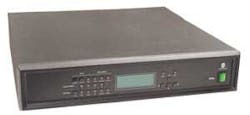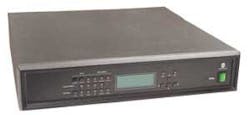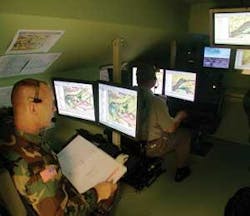Army combat simulator uses RGB recorders
By Ben Ames
ORLANDO, Fla. - Officials at David H. Pollock Consultants Inc. (DHPC) in Westwood, N.J., are using he DGx real-time digital recording system from RGB Spectrum, in Alameda, Calif., to capture real-time information from the network for a U.S. Army Future Combat Systems (FCS) simulator.
The data recorder provides a crucial link in the FCS component called MultiCell and Dismount Command and Control, or M&D C2. That system binds together multiple mobile tactical operations centers, creating an integrated battlefield command environment. In practice, such a system would build links between personnel carriers, dismounted soldiers, unmanned aerial vehicles, and other Army vehicles. M&D C2 is located at the Army’s Program Executive Office for Simulation, Training, and Instrumentation Command (PEO STRICOM) in Orlando, Fla.
DHPC designers were contracted by the Defense Advanced Research Projects Agency in Arlington, Va., to build a collection of lab simulators called the Battle Command Support Environment (BCSE) to test different technologies. Soldiers sit at workstations in each simulator, run battle strategies, then replay the results in a classroom to review each mission.
“We study the battlefield concepts of situational awareness, decision making, control of subordinate assets, force effectiveness, and system performance,” says Jim Seward, program manager for DHPC. “These experiments require rigorous data collection and analysis to provide quantifiable information on both the performance of prototype software and interface as well as the human performance and force effectives within simulated test environment force-on-force scenarios.”
Compared to other computers tested, the RGB DGx recording systems provided faithful, sharp reproduction of the small text and symbology in these exercises, he says.
The designers chose seven of the Gx systems to record the exercises in its three simulators:
- a unit called the Dismount Infantry Simulator, which mimics an 11-person infantry carrier vehicle (ICV), holding a driver, a gunner/commander, and nine infantry dismounts;
- one to act as the command and control vehicle (C2V) version of the ICV, where six soldiers use the Commander Support Equipment; and
- a Combat Arms Virtual Environment, which is a virtual reality immersion room where dismounted infantry soldiers perform battlefield tasks with live weapons and sensors.
The C2V simulator alone uses two DGx systems to record live situational awareness and sensor data. That includes eight real-time inputs from the vehicle’s four operator stations, each using two displays. The inputs include video from unmanned air and ground vehicles, graphical data from acoustic and seismic sensors, surveillance image captures of the battle theater at resolution up to 1280 × 1024, and live audio.
Inside the C2V simulator, soldiers use the sensors to detect enemy force movement, and use visual observations from the unmanned vehicles to assess threats and direct their battlefield assets.
The Dismount Infantry Simulator uses another five DGx systems to record digital maps, topology graphics, and audio and video from soldiers’ helmet-mounted displays, with overlaid symbology.
At the end of each exercise, the engineering staff uses the DGx recordings for debriefing, to learn from the experiences. Each of these after action reviews includes 28 synchronized images, routed through rear-screen projectors onto large classroom screens.
Army leaders are building this network today as they plan to field FCS by 2010. When it deploys, the FCS fleet will include lighter, faster battle tanks, fighting vehicles, personnel carriers, robotic vehicles, and combat support systems.
For more on RGB and the DGx system, visit www.rgb.com.


